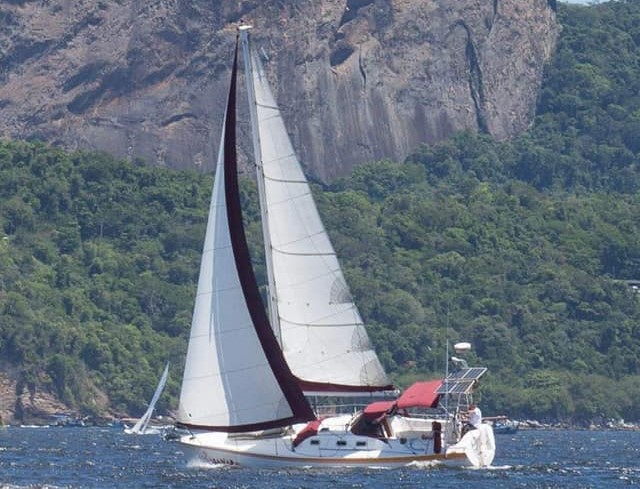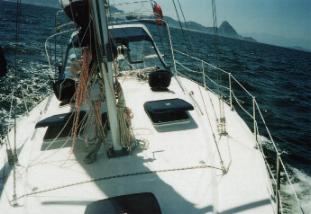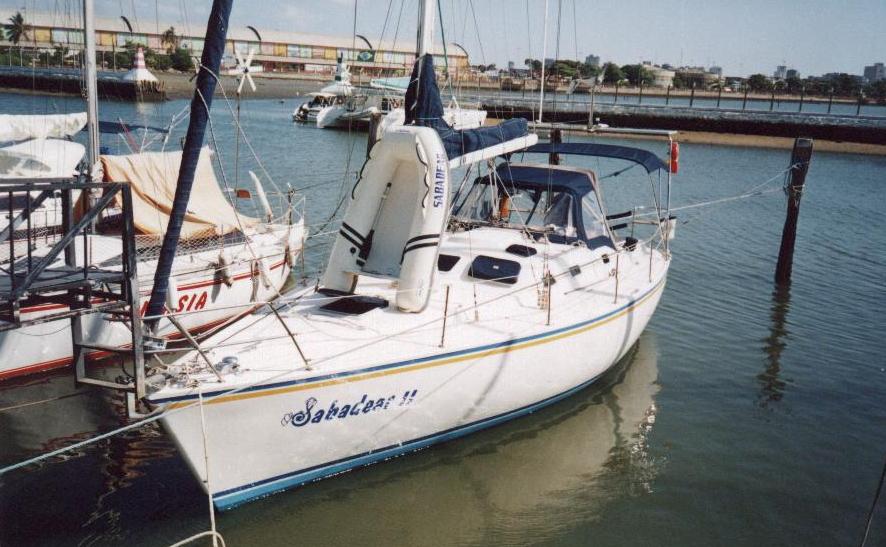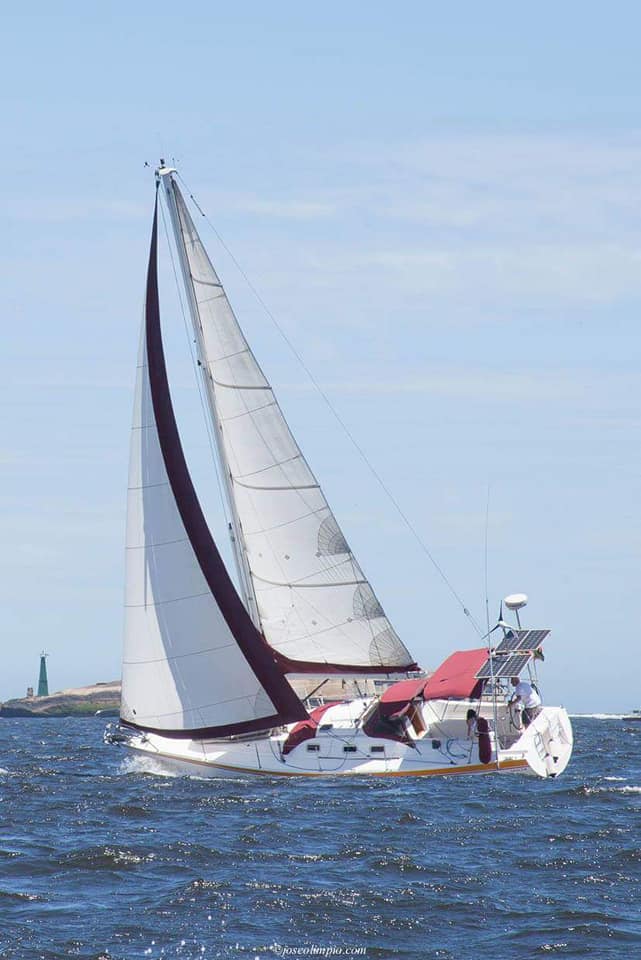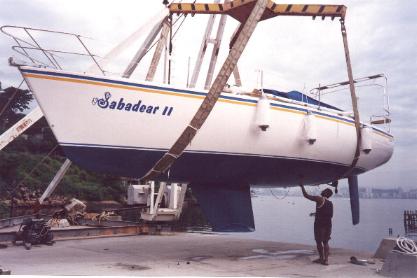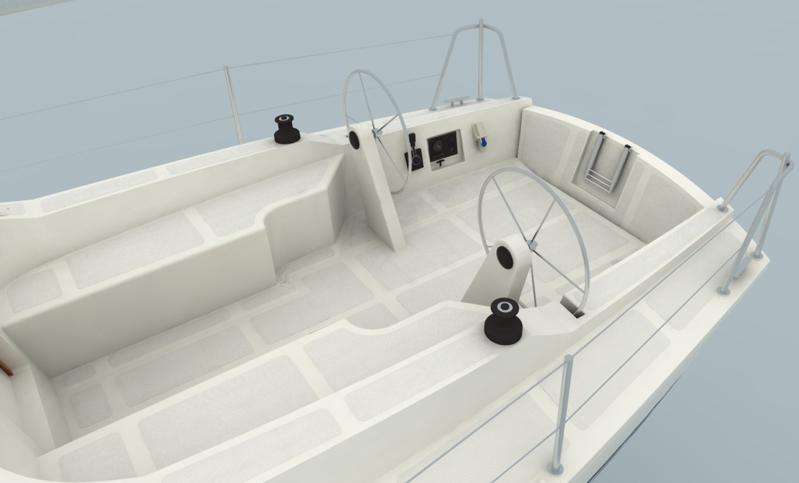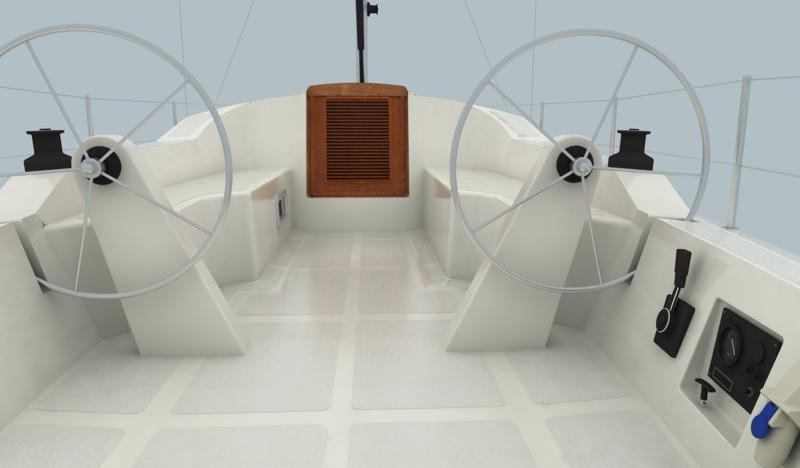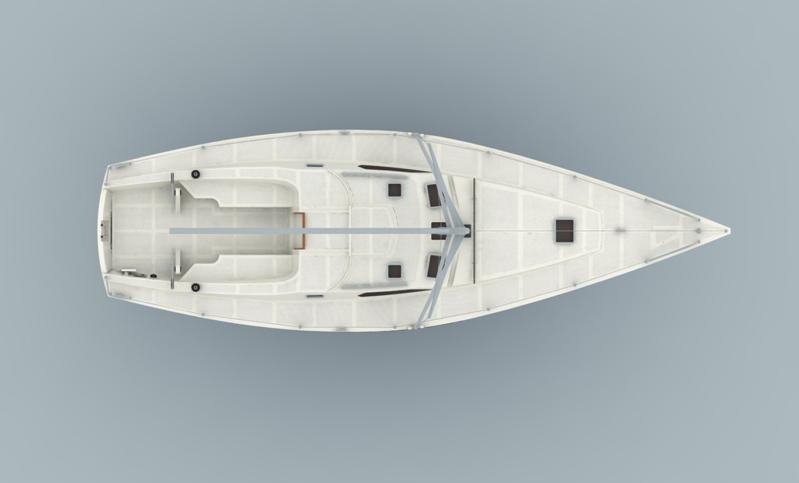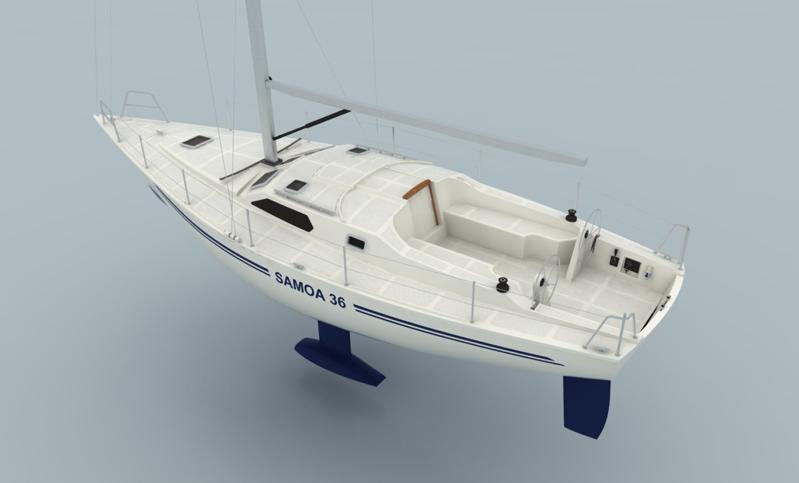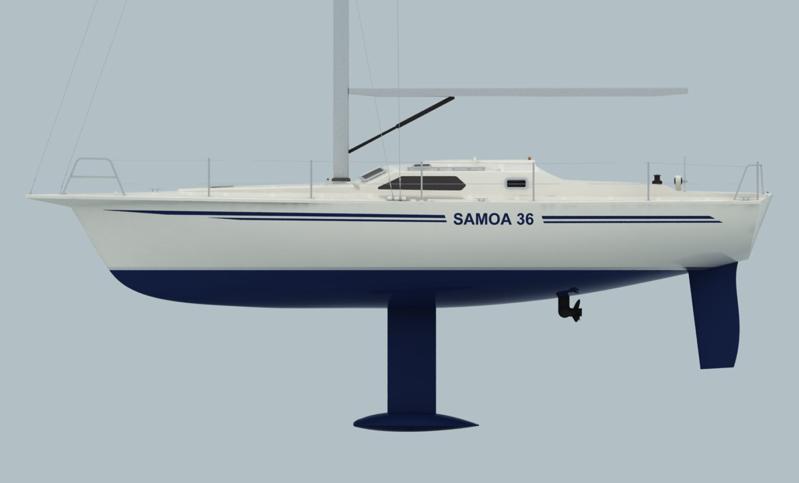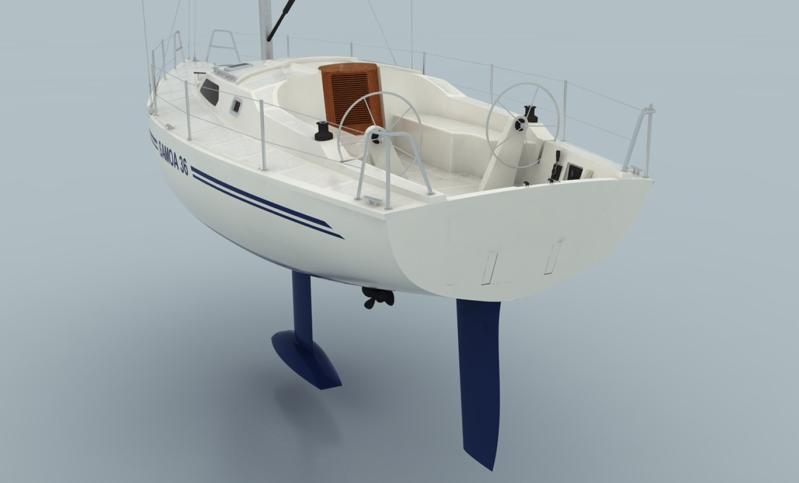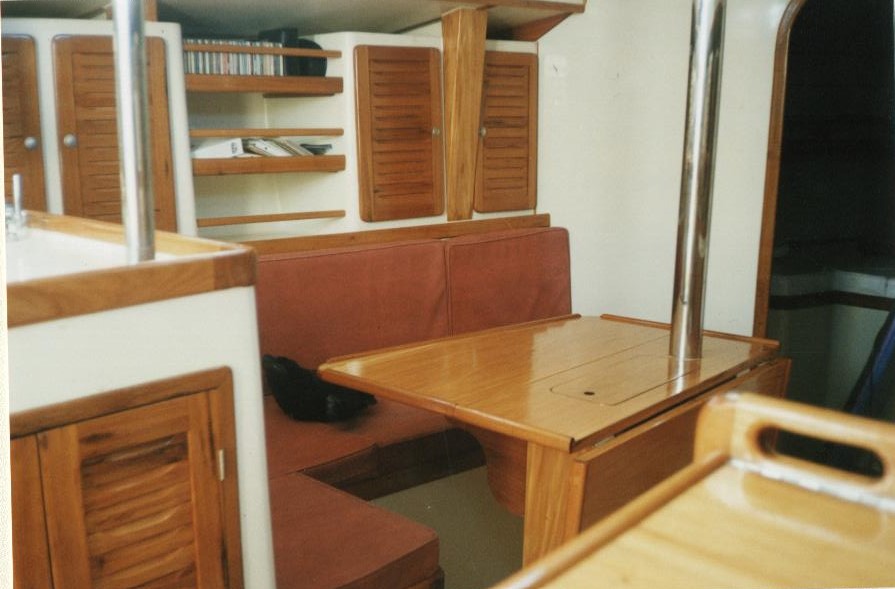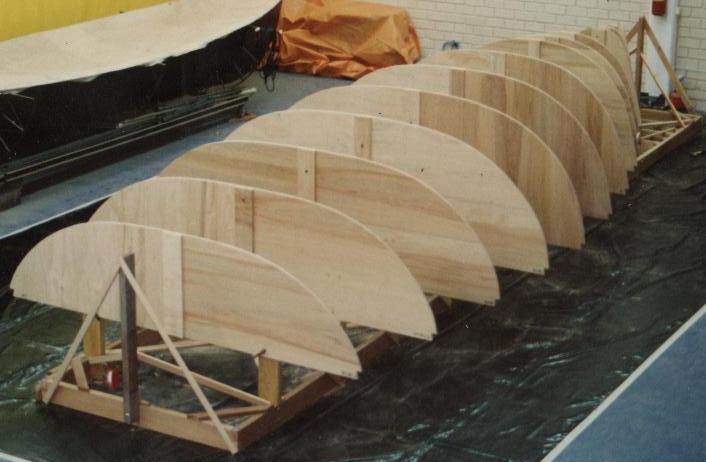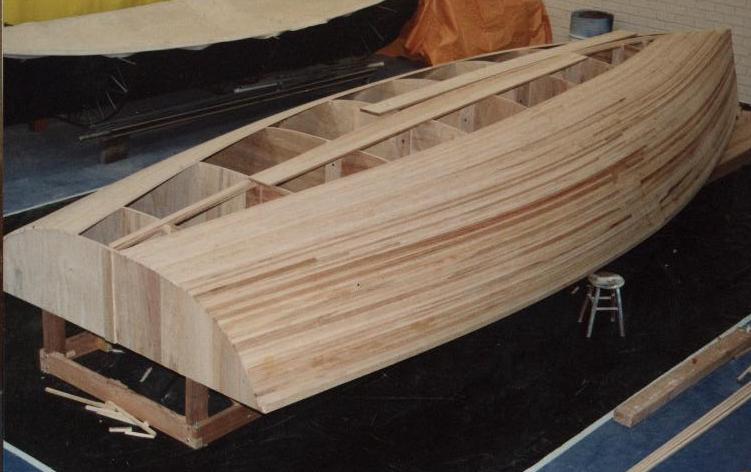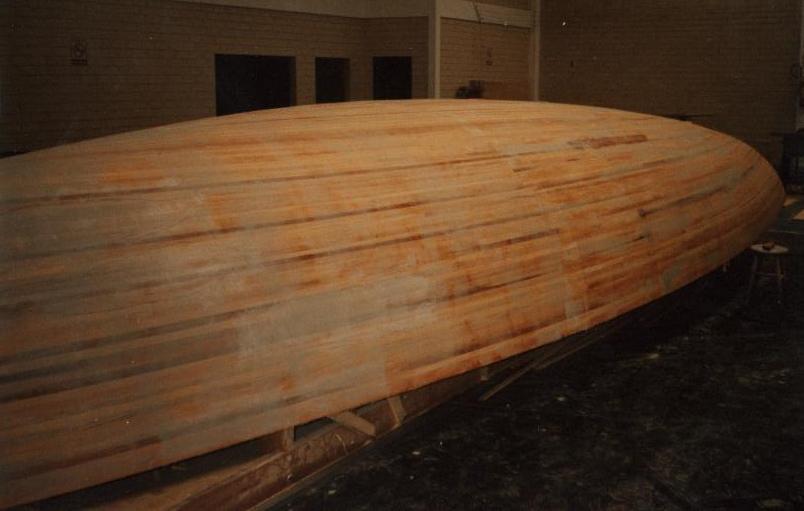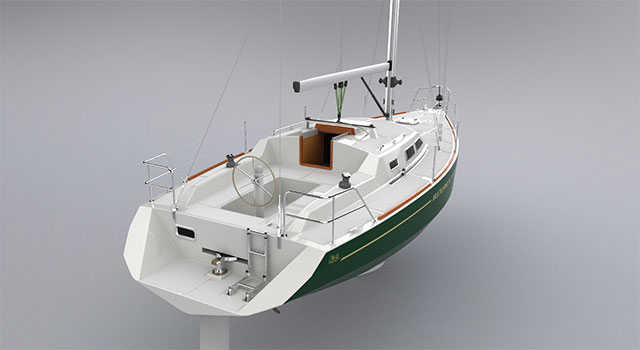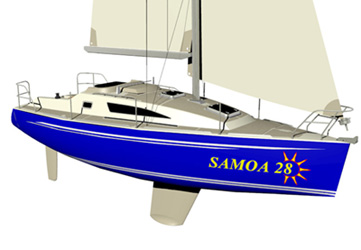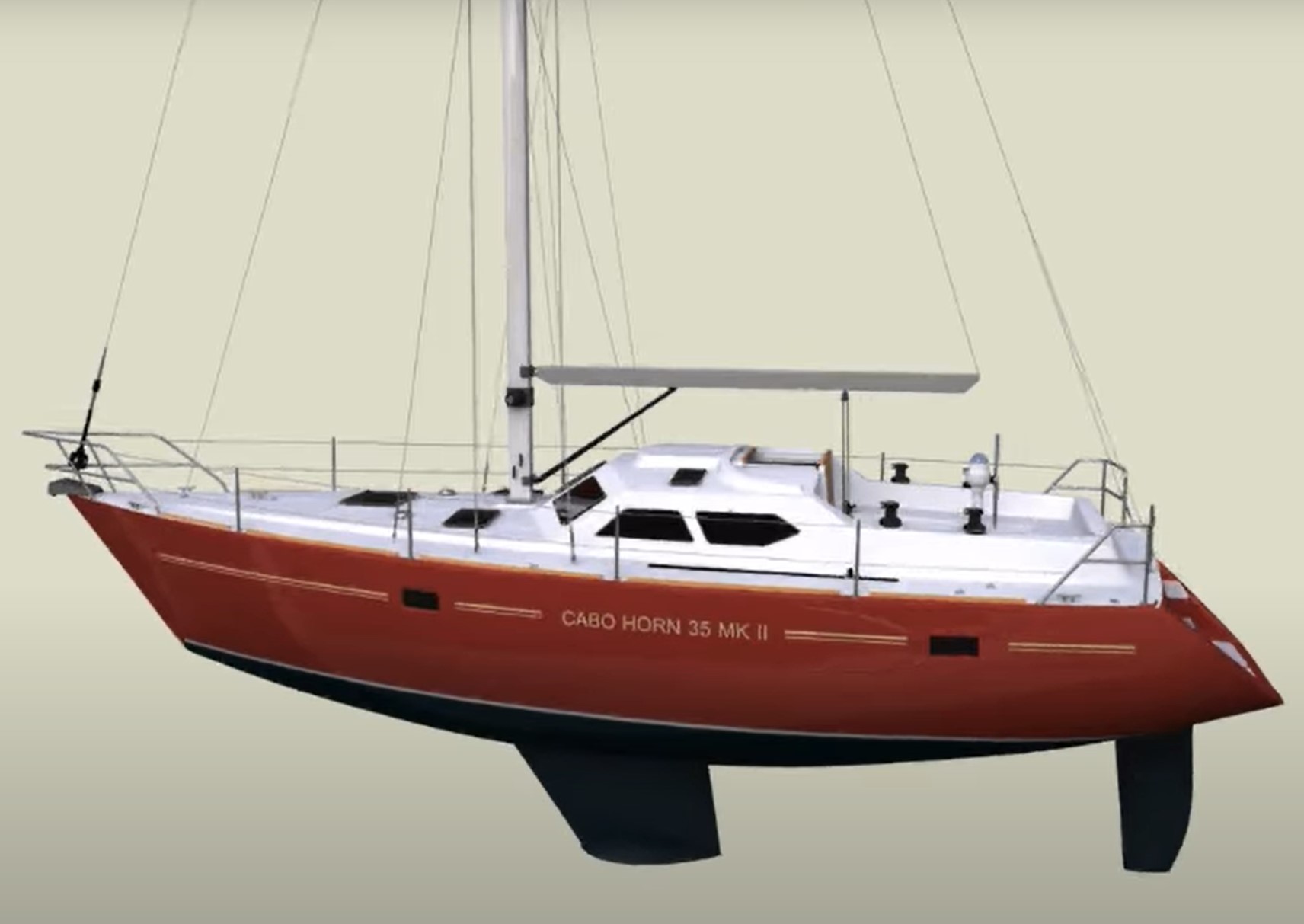The Samoa 36 is designed to provide a high-performance cruising sailboat to be produced in fibreglass reinforced plastic. These plans are ideal for construction in series as labour and time of fabrication are much shorter once the fabrication moulds are available.
Technical Data
Length Overall
11.00 m (36’ 1”)
Length Waterline
9.20 m (30’ 2”)
Beam
3.84 m (12’ 7”)
Draft (keel with bulb)
1.55 m (5’ 1”)
Ballast
2,250 kg (4,956 lb)
Displacement (light)
6,500 kg (14,317 lb)
Freshwater Tank Capacity
500 l (132 gal)
Fuel Tank Capacity
170 l (45 gal)
Maximum Standing Headroom
2.00 m (6′ 6″)
Sail Area
57.42 m2 (618 sq. ft.)
Auxiliary Propulsion
40 hp
Construction
Fiberglass
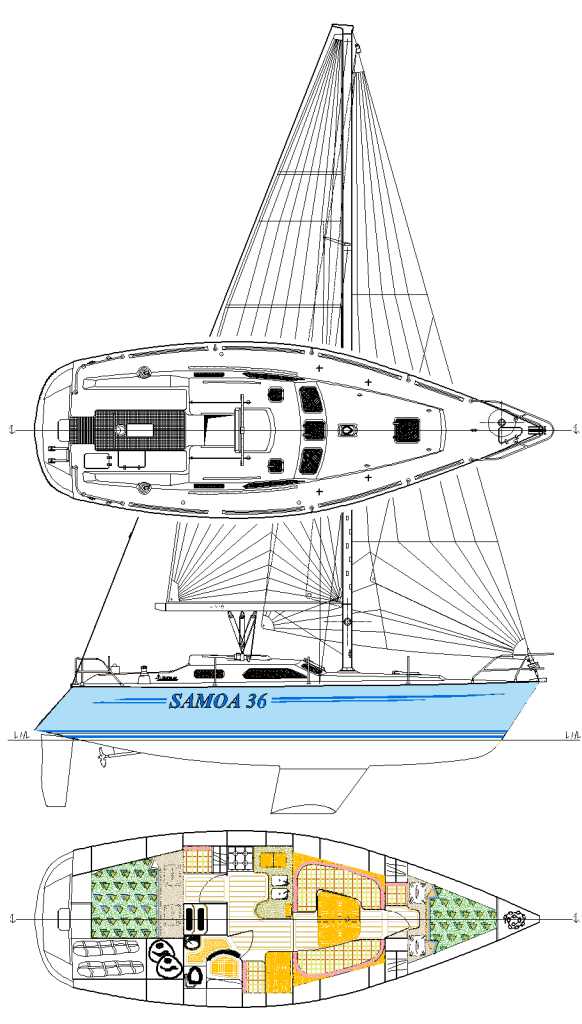
Boat Description
The fore cabin is designed with with V bunks that can be converted into a very comfortable double berth, when desired, using a board insert at bed level. In this cabin there is a sofa at port side and a locker placed symmetrically.
A bulkhead with door separates the fore cabin from the main saloon and in this area are placed two settee berths, the one at port side being U shaped. The hinged table, placed at centre line, is large enough for four persons to have a meal in comfort even if only using its port side half. When both sides are open the number of guests can be doubled. Behind the settees there are lockers and bookshelves at both sides. Most production yachts this size don’t offer a lot of storage space, instead preferring to place the settees practically touching the topsides.
At the aft side of the saloon are placed the galley and the navigation table. This area of the interior has a raised floor that elevates the eye level to the external windows, providing good visibility to the outside. These views are mainly praised by the cook who works in the brightest and most aired part of the boat. The navigator also profits from the splendid natural illumination of this compartment as well as good visibility of the surroundings while navigating in congested waters.
The galley counter extends up to the centreline providing a very large working area. Under this counter there is room for a garbage bin, compressor for refrigeration and there is still place for pots and pans. The large refrigeration compartment is easily accessed once there is a recess in the counter’s aft wall that shortens the distance for one’s arm to reach the inside corners of the box. In front of this recess are placed twin sinks which are handy for using one for washing and the next for drying. Closer to the centreline there is additional room that can be used for placing serving plates, not far from the dining table.
Behind the gimballed gas stove and the refrigerator’s door, above the counter surface, are placed two lockers normally used to store kitchen utensils and provisions.
The navigation table at the other side with its cosy stool is large enough for all electronic gear normally placed aboard a boat this size, and there is still enough room for a paper chart folded in half. The electrical distribution panel is placed to the right of the navigator’s seat and next in front is placed another wall where radios and other electronic equipment may be installed.
The boat’s head is placed to starboard of the engine compartment. There is ample headroom on top of the grated floor board for a shower. Sink and toilet are positioned for maximum comfort. Following in the aft direction there is a huge compartment for stowage with access from the head compartment and from outside. Few yachts provide such a convenience. This compartment can be used to store spare sails, inflatable dinghy, ropes, and fenders, still leaving room for the installation of a dessalinator or even a generator. Closer to the transom is placed a tight locker for gas bottles.
At port side is the aft cabin. With a sofa and a large double berth intended to be used in the fore and aft direction, as it should be. Close to the topside there are lockers for clothes and bedding.
Externally the Samoa 36 has a perfect aesthetic balance in the distribution of fore deck, cabin trunk, and cockpit.
With three hatches, two opening ports and three fixed windows, the cabin trunk has a very efficient natural air circulation and lets a lot of light to enter down below.
The foredeck is slightly raised forward of the cabin trunk leaving a small side wall very convenient as a toe rail when one needs to go forward, and the boat is heeled. It also improves headroom down below. The cockpit with steering wheel opens aft to the boarding platform, and the helmsman seat pivots leaving a wide passageway for who comes aboard. Two hinged hatches placed at the cockpit starboard seat give access to the large lazarette behind the head and farther back to the gas compartment. The Samoa 36 sail plan is typical of a high-performance cruising boat. There are two pairs of spreaders angled aft and at the lower spreader there is one pair of lower shrouds each side, one of them going forward and the other joining the top and intermediary shrouds chain plate. This rig assures excellent transverse and longitudinal stiffness. The boats sloop rigged but we advise installation of a removable inner fore stay about one foot from the top of the mast for hoisting a hooked storm jib in very bad weather, leaving the foresail furled. With a generous sail area of 57,4 m2 the Samoa 36 is a fast boat in light winds.
The simplicity of the deck arrangement makes it easy sail her in an effortless way. The main sail traveller is placed on the cabin trunk’s roof, so there is no interference between dodger and main sheet. On the cockpit there are only the primary fore sail winches, placed to the outside of the coamings. The cockpit is almost clear, with only the steering wheel and a folding table. The Samoa 36 has above average capacity for water and diesel, a quite shallow draught and adequate balanced rudder.
Browse Gallery
See Related Plans

